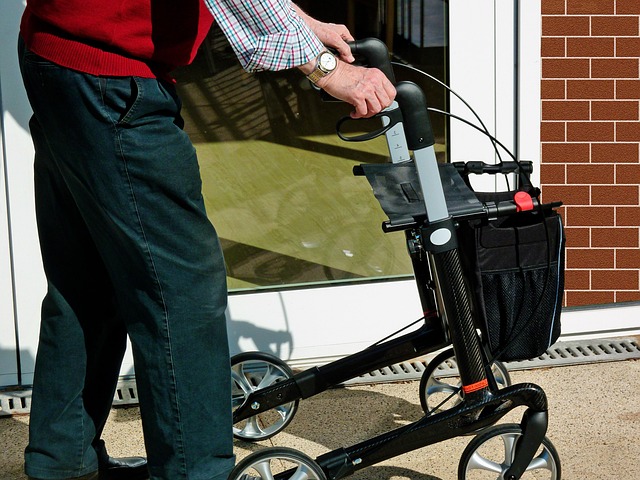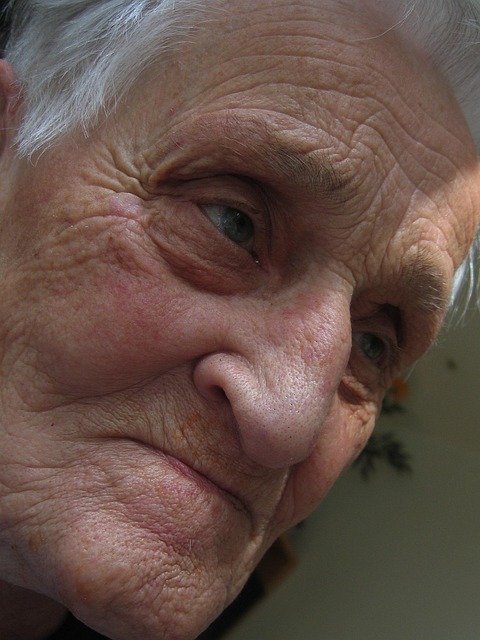Laredo’s Top In-Home Aides: Save Money, Ensure Safety for Elderly Care
Are you seeking reliable and cost-effective in-home aid for your elderly loved ones in Laredo, Texas…….
As the global population ages, ensuring the well-being and independence of elderly individuals has become a paramount concern. In Laredo, Texas, and indeed across the United States, in-home aide services have emerged as a vital support system, offering assistance to seniors who wish to age comfortably in their own homes. This article aims to provide an extensive exploration of in-home aide for the elderly in Laredo, delving into its various aspects, benefits, and future prospects. By examining the current landscape, historical development, global influences, economic implications, technological innovations, policy frameworks, and challenges, we can gain a comprehensive understanding of this essential service. Moreover, through case studies and discussions on future trends, we will highlight its transformative potential in enhancing the quality of life for Laredo’s aging population.
Definition: In-home aide services, specifically tailored to the elderly, involve the provision of non-medical assistance and support to seniors who require help with daily tasks, mobility, personal care, or companionship in their homes. These services are designed to promote independence, improve quality of life, and prevent unnecessary hospitalizations or institutionalization.
Core Components:
Historical Context: The concept of in-home care has evolved over time, with roots tracing back to traditional family support systems where younger generations cared for their aging relatives. However, the modern in-home aide industry gained prominence in the mid-20th century as life expectancy increased and societies faced the challenge of an aging population. In Laredo, Texas, as in many cities across the US, the demand for these services has risen steadily due to demographic shifts and advancements in medical care extending people’s lives.
Significance: In-home aide services play a pivotal role in several ways:
The demand for in-home aide services is not unique to Laredo; it is a global phenomenon with varying degrees of development across regions.
International Influence:
Key Trends:
The in-home aide industry contributes significantly to the global economy and local Laredo markets.
Market Dynamics:
Economic Impact:
Pricing Models: Caregivers may charge hourly rates, daily fees, or provide package deals tailored to clients’ needs. Some agencies offer subscription models, ensuring regular and consistent care.
Technology has revolutionized the in-home aide industry, improving service quality and accessibility.
Telehealth and Remote Monitoring: Caregivers can use video conferencing for virtual check-ins, medication reminders, and health monitoring. Wearable devices can track vital signs and alert caregivers or family members in case of emergencies.
Smart Home Systems: These systems enable remote control of lights, temperature, and security. Sensors can detect falls or unusual behavior, triggering alerts to caregivers or emergency services.
Mobile Applications: Apps provide scheduling, communication, and task management for both caregivers and clients. They offer a convenient way to book appointments, track medication, and request services on the go.
Artificial Intelligence (AI): AI-powered chatbots can provide basic companionship, while more advanced systems can analyze data to predict health issues and suggest preventive measures.
To ensure quality and safety, in-home care services are subject to various legal frameworks and regulations.
Licensing and Certification: Many states, including Texas, require caregivers and agencies to be licensed or certified. This ensures that they meet specific training, health, and safety standards.
Background Checks: Comprehensive background checks are conducted on caregivers to ensure the safety and well-being of clients.
Insurance Coverage: Some insurance plans cover in-home care services, while others may provide reimbursement for out-of-pocket expenses. Medicare and Medicaid have specific guidelines regarding eligible services and coverage.
Quality Assurance: Regular inspections, client feedback mechanisms, and oversight by regulatory bodies help maintain high service standards.
Despite its numerous benefits, the in-home aide industry faces several challenges.
Workload and Staffing Shortages: The demand for caregivers often exceeds the available supply, leading to heavy workloads and potential burnout. This shortage is further exacerbated by low pay and limited career advancement opportunities.
Training and Education: Ensuring adequate training for caregivers is crucial to provide safe and effective care. Continuous education on new technologies, medical advancements, and best practices is essential.
Accessibility and Affordability: In-home care services can be expensive, making them inaccessible to low-income seniors. Subsidies or community programs may be required to bridge this gap.
Privacy and Confidentiality: With increased technology usage, protecting client privacy and sensitive health information becomes a significant concern. Caregivers must adhere to strict data security protocols.
This city-run program pairs elderly individuals with volunteers for companionship, social interaction, and assistance with light tasks. The program has been successful in reducing feelings of loneliness and improving overall well-being among participants. By engaging community members as volunteers, it also fosters a sense of intergenerational connection.
Japan’s aging population has led to innovative solutions like the “Smart Home for Seniors” project in Tokyo. This initiative utilizes smart home technology, including sensors and AI-powered assistants, to monitor seniors’ health and provide remote care. The system alerts caregivers or emergency services if any abnormalities are detected, ensuring timely intervention.
The in-home aide industry is poised for significant growth and transformation.
Emerging Technologies:
Personalized Care: Future care models will likely focus on individualized care plans tailored to each client’s unique needs and preferences.
Integration with Healthcare Systems: Seamless integration between in-home care services and healthcare providers can improve coordination and continuity of care.
Community-Based Models: Collaborative efforts between local governments, non-profits, and private sector partners could expand access to in-home care services and promote community engagement.
In-home aide services play a vital role in supporting elderly individuals and addressing the challenges of an aging population. With technological advancements, improved policy frameworks, and innovative program models, the industry is well-positioned for growth and positive impact. As Laredo, Texas, and other communities embrace these changes, they can enhance the quality of life for seniors while fostering a more inclusive and connected society.

Are you seeking reliable and cost-effective in-home aid for your elderly loved ones in Laredo, Texas…….

Looking for reliable, cost-effective in-home aide for elderly in Laredo, Texas? Our tailored service…….

Stay comfortably at home, independent and safe with our free in-home aide service tailored exclusive…….

Looking to support your aging loved ones in Laredo, Texas, while keeping costs under control? Best C…….

Are you seeking reliable and compassionate in-home aide for your aging loved ones in Laredo, Texas?…….

Looking to provide the best care for your elderly loved one in Laredo, Texas, without breaking the b…….

Looking for reliable and affordable in-home aide for elderly Laredo Texas residents? Laredo Elderly…….

Looking to save thousands on healthcare costs while keeping your loved ones safe and independent in…….